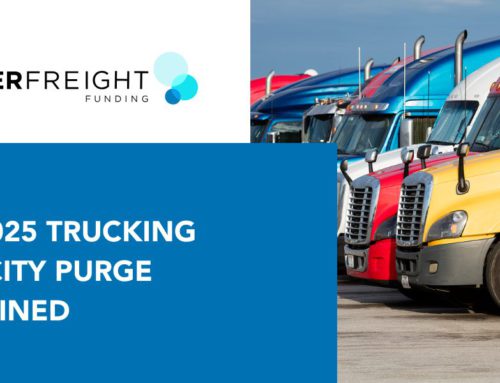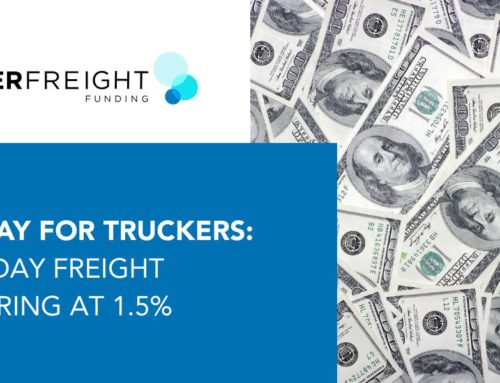Heavy haul trucking is a popular method for transporting goods and machinery across the U.S. If you operate a trucking company that performs heavy hauling or is looking to start, check out this guide to learn more about how the process works.
Jump To Section
What Is Heavy Haul Trucking?
Heavy haul trucking goes beyond the standard industry dimensions. It would include wide loads, oversized freight, heavy equipment or anything overweight and oversized.
Hauling a heavy load requires specialized experience performed by qualified operators. These individuals and companies will understand the legal limits across U.S. highways.
The process is extensive and often involves escorts, special routes, obstruction removal, power line lifting and more. Truck drivers must have the right skills to transport the load with detailed planning and permits safely.
What Constitutes a Heavy Load?
Any load that is above the legal limits on the majority of roads would be heavy loads. More specifically, heavy loads are often:
- Wider than 8.6 feet
- Longer than 53 feet
- Above 13.6 feet tall
- Over 80,000 pounds in gross weight
Remember that numbers can vary between states. Many heavy loads are military equipment, wind turbine blades, farming equipment, construction machinery or airplane parts.
You need a specialized truck and trailer to transport these large items, such as a removable gooseneck (RGN) trailer or trailers with driven pusher wheels at the back. Other trailers used for heavy haul trucking include step-decks, flat decks and double drops.
Axle restrictions also play a role in heavy load classifications. There are federal and state laws that determine the weight limits for oversized loads based on the axle number and type and the roads. Generally, the more axles you have, the more weight you can haul.
Heavy hauling trailers will have anywhere from five to 20 axles. The axles’ locations, the distance between them and the role they play influence how much weight the trailer can legally carry. Again, these limits can vary by state, but general axle guidelines include:
- Steer axles: Weight limit of 12,000 pounds.
- Single axles: Weight limit of 20,000 pounds.
- Drive axles (in tandem setup): Weight limit of 34,000 pounds.
- Tandem axles: Weight limit of 34,000 pounds.
Loads that meet these guidelines would be considered heavy loads and be subjected to specific trucking regulations and permit requirements.

How to Get Trucking Heavy Hauling Permits
If you’re interested in moving heavy loads, you’ll need to know how to get heavy haul permits. You must get a permit for each state where you take your heavy load. Every state has a specific permit based on the local conditions of terrain, environment, population density and laws.
The first step in getting a permit is to submit a movement plan, time estimates and information on your cargo. The cost to obtain a permit is often between $15 and $70 depending on these variables, including the state, and may have an additional processing fee.
After you apply for a state permit, it will likely be issued within three to five days. Permits are good for one load and the journey it’s meant to take. Generally, permits will include restrictions on routes, movement times and support equipment that can be used. For example, some states do not allow heavy load movement on weekends, holidays or in poor winter weather.
Once you’ve received your permit, remember to keep it with the load at all times so the driver can show it to authorities when requested. Many heavy haul permits include the use of safety features like:
- Flags: Loads can have four brightly colored flags to help mark different areas of the vehicle during movement.
- Banners: Most oversized loads will need a “Wide Load” or “Oversized Load” banner on the front and back of the trailer to help alert other drivers of your presence.
- Lights: Some states require rotating or flashing lights to warn other drivers of the oversized load or slow movement.
- Guide cars: Wide loads may need a guide or a pilot car driving with the vehicle to help guide traffic around the vehicle safely.
Always adhere to any rules and regulations of the road and for wide loads in the states you take your vehicle. Doing so helps ensure the safety of your driver and other people while staying in compliance.
What Porter Freight Funding Can Do For You
If you deliver heavy haul loads throughout your state or country, you need a way to deal with the payment process efficiently. At Porter Freight Funding, we know it can be challenging to keep track of invoices for a month or longer — that’s why we’re here to help.
When you partner with us, you send us all the payment paperwork and invoices and we pay you for the load. We then bill and collect payment from the customer, allowing you more time to focus on making deliveries without the concern for invoices.
Once you sign with us, we’ll assign you a personal representative to take care of all your information. Our team will send you a welcome email and information to sign into your portal to get started!
Contact Porter Freight Funding to Get Started
Are you ready to transform your payment processes for your trucking company? Partner with Porter Freight Funding to reap the benefits of working with a team who can help you with your invoices. Our team allows you to focus less on payments and devote your time to what matters most — operating your heavy haul trucking business.
Get in touch with us by filling out a contact form today!




